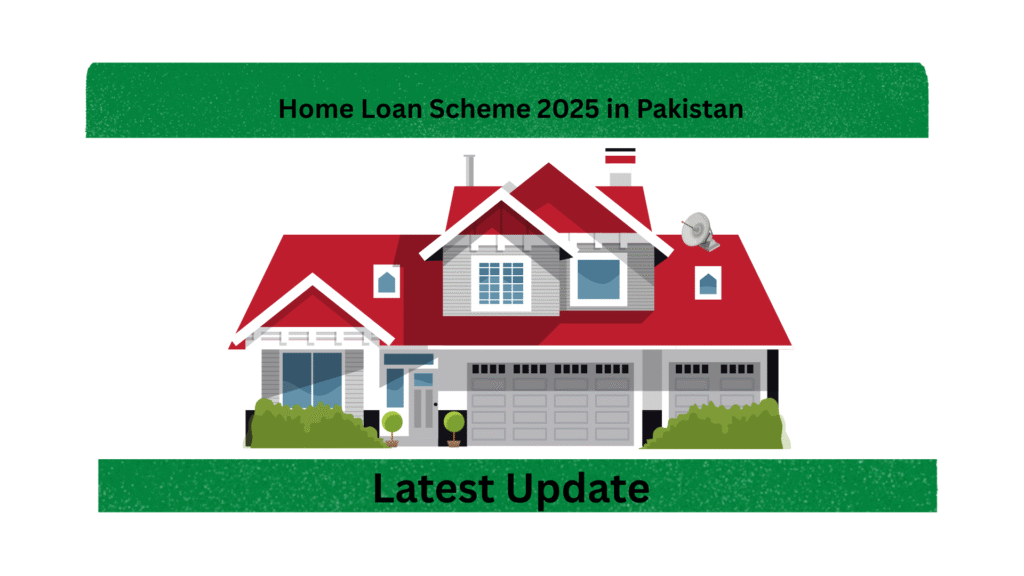
Navigating Pakistan’s housing market isn’t easy, especially if you dream of building your own home but worry about expenses and getting a fair loan. The Home Loan Scheme 2025 aims to tackle these hurdles with government-subsidized home loans for people looking to buy or construct five marla homes. But does the support really match real costs? Let’s break down the scheme, eligibility rules, true building expenses, and potential challenges homeowners should expect before applying.
Overview of the Home Loan Scheme 2025
The Home Loan Scheme 2025 is a government initiative designed to make building or buying a small home more manageable for everyday Pakistanis. The plan’s goal is to offer subsidized loans, so more people can have a shot at owning a home without crushing debt or endless waiting.
This isn’t the first time such a plan has surfaced. The scheme closely follows the previous initiative from the PTI era, spearheaded by former Prime Minister Imran Khan. While some terms have been refreshed, the core concept remains the same: easy loans for small homes.
A significant ₨ 72 billion subsidy has been approved by the Economic Coordination Committee (ECC). Here’s the breakdown:
- ₨ 62 billion is set aside to help lower interest payments for borrowers.
- ₨ 10 billion goes to administrative costs and supporting local banks, who’ll also profit from handling these loans.
The timing couldn’t be better. Pakistan faces a tremendous housing shortage, and many families find themselves priced out of the property market. With the population growing, the need for affordable housing finance is more urgent than ever.
Details of Loan Amount and Interest Rates
Loan Limits Based on Property Size and Need
The Home Loan Scheme 2025 focuses on five marla homes, both existing and to-be-constructed. Here’s exactly what to expect:
- Up to ₨ 20 lakh: You can borrow up to twenty lakh rupees if you’re planning to buy or build a five marla home.
- Interest Rate: 5% fixed annual rate for up to 20 years.
- You can repay faster if possible, but if not, you have two decades to pay it back.
- Loans above ₨ 20 lakh and up to ₨ 35 lakh:
- For amounts between ₨ 20 and 35 lakh, the lending structure changes.
- First 10 years: 8% fixed interest.
- Next 10 years: Market rate applies (it could be 8%, 10%, or more depending on banking trends).
- Borrowers can take out any amount in this slab as needed.
- For amounts between ₨ 20 and 35 lakh, the lending structure changes.
Interest Rate Details and Repayment
- Fixed rate means your payments don’t change during the set period (five or eight percent as stated).
- Market rate after ten years can jump, depending on economics, creating uncertainty for bigger loans.
- For example, at 5% fixed, if you borrow ₨ 20 lakh and repay over 20 years, you pay about ₨ 10 lakh in interest alone.
Important notes:
- Repayment flexibility exists, so clearing your loan faster saves you interest.
- Although loans make homebuilding easier, interest costs add up and can stretch financial limits.
Eligibility Criteria for the Home Loan Scheme
To be considered, you have to meet the following eligibility requirements:
- No other property ownership:
You must not currently own any other property in your name. - You must have or plan to acquire a five marla plot:
Either you already have a small plot or intend to buy one under this scheme. - You cannot use the loan for commercial projects:
It’s strictly for one five marla residential house or flat per applicant. - Eligibility limit on amount:
Amount borrowed must fit within the ₨ 20-35 lakh range as per scheme slabs. - Documentation and verification:
Standard loan documentation applies, including proof of no other property and regular verification by related authorities.
If you fit this profile and plan a first-time purchase or new build on a five marla plot, you’ll qualify to apply for this government-backed loan.
Track Record: Success and Gaps in Previous Housing Loan Schemes
This scheme isn’t brand new. Its roots trace back to the Imran Khan-led PTI government. Here’s what happened then:
- 1,84,000 people received loans for small homes under the earlier version.
- 62,000 houses were actually built thanks to these loans.
- More than 2,00,000 applied, but only a portion qualified and got approved funding.
This demand clearly points to the need for affordable home financing. While the scheme helped thousands, many more were left waiting, revealing the gap between what’s promised and what’s delivered. Still, seeing so many houses completed shows this scheme can deliver real change—if scaled up and refined.
What Does It Actually Cost to Build? Is ₨ 20 Lakh Enough for a Five Marla House?
Let’s dive into real numbers. One of the biggest concerns is, “Will ₨ 20 lakh really get me a five marla house?” Here’s what reality says:
Urban vs Rural Costs
- Urban centers:
In Lahore, Karachi, Islamabad, Multan, five marla homes cost much more than ₨ 20 lakh. Even flats often exceed this amount. - Rural areas:
It may be possible to find cheaper land and build closer to the ₨ 20 lakh target, but options and infrastructure are limited.
Construction Material and Labor Costs (Current Market Rates)
Here’s a snapshot of current building supply prices:
- Bricks: ₨ 18,000 per 1,000-unit batch
- Steel (Saria): ₨ 242 per kg
- Cement: ₨ 1,410 per bag
- Sand: ₨ 17,000–18,000 per truck
- Gravel: ₨ 12 per cubic foot
- Labor (masons and workers): ₨ 3-4 lakh for a standard grey structure build
What is a Grey Structure, and What’s Still Left After That?
The “grey structure” of a home means the bare bones: walls, roof, and basic partitioning, without doors, windows, tiles, plumbing fixtures, or paint.
- Grey structure cost now:₨ 25–27 lakh for a single-story five marla house
- At this stage, you don’t have tiles, proper flooring, doors, or real finishing; only the shell stands.
- Finishing and furnishing:
If you want to fully finish your home (tiles, fixtures, plumbing, electrical, proper flooring):- An additional ₨ 45–55 lakh is typically needed.
Can Borrowers Really Afford to Build with This Loan?
- Borrowing ₨ 20 lakh on this scheme, you still need at least ₨ 5–7 lakh extra just for the basic grey structure.
- To properly furnish and complete your home, you may need ₨ 45 lakh or more beyond the original loan amount.
- With 5% interest, ₨ 20 lakh borrowed costs you about ₨ 10 lakh in interest, bringing the total payback to nearly ₨ 30 lakh.
- For families without savings, this support is not enough. The scheme mostly helps those who already have some capital or other assets.
Legal and Policy Aspects: The Foreclosure Law and Industry Impact
What is the Foreclosure Law?
A new “foreclosure law” is being prepared to protect banks if loans aren’t repaid. Here’s how it works:
- If a borrower stops paying (for any reason, including death), banks can legally and quickly claim the built or bought house to recover their money.
- This gives banks security on these loans but makes homeowners vulnerable to losing their homes if things go wrong.
Policy Gaps and Industry Suggestions
The construction industry stands to benefit from a wave of new-building activities, thanks to increased demand from loans. However:
- Rising cost of building materials is a major blocker for both homeowners and small contractors.
- No clear government orders, SROs, or direct price control measures for steel, cement, or other materials have accompanied this scheme yet.
- Many experts suggest that supporting material costs or offering broader subsidies alongside the loan scheme would more effectively help families build real homes.
Prospects and Challenges: What Does the Future Hold for the Home Loan Scheme 2025?
The Upside:
- Helps families entering the housing market with easier access to loans.
- Government’s fixed-rate offers create predictability for borrowers.
- Could jumpstart growth in Pakistan’s construction industry and related sectors.
The Roadblocks:
- Skyrocketing construction costs mean that, in most urban areas, the loan alone won’t be enough.
- Borrowers must have sizeable savings to make their home-building dream come true.
- Large loans above ₨ 20 lakh face the risk of market-based interest rates after ten years, increasing uncertainty.
- Foreclosure law puts borrowers at significant risk if their financial situation changes unexpectedly.
Quick Pros & Cons Checklist:
Pros:
- Easier loan access, especially for first-time buyers with modest needs
- Fixed interest for smaller loans
- Clear attempt to address Pakistan’s housing gap
Cons:
- Real life home-building costs much higher than loan amounts
- Additional personal savings required
- Market-based rates for larger loans bring unpredictability
- Foreclosure risk for struggling families
The Bottom Line
The Home Loan Scheme 2025 is a renewed effort by the Pakistani government to turn home ownership from a distant dream into a reachable goal for more families. While the subsidies and loans offer hope, the reality on the ground—rising construction costs and market rate risks—means that families still face steep challenges.
Those considering the scheme need to fully understand not just the generous headlines, but the hidden requirements and extra funds they’ll need. As the project moves forward and any new material price relief emerges, more families may benefit, but for now, careful planning and honest budgeting remain essential.
For housing market news, scheme updates, and more practical guides, keep visiting our site.
